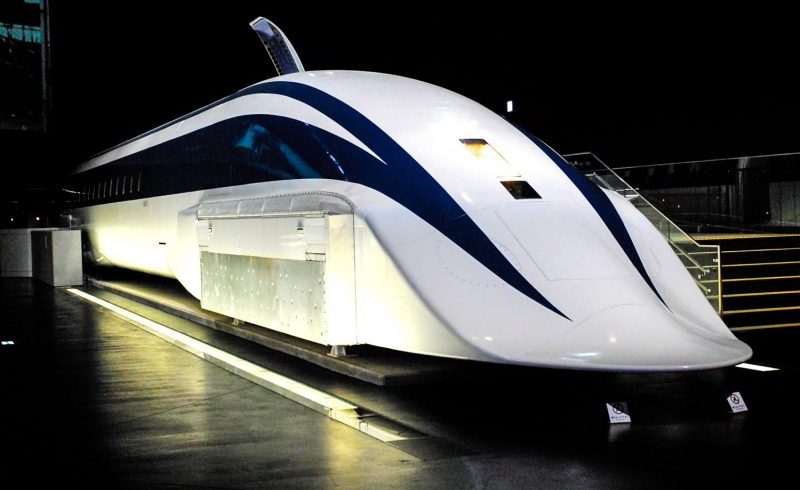
Imagine a floating train crossing Japan at full speed. Its wheels do not touch the ground, it is a dream that comes true, but as the years go by, Maglev continues developing fastest trains.
Functioning
The Maglev SC or Superconducting Magnetic train has been developed by the Central Japan Railway Company and the Railway Technical Research Institute since the 70s.
Its operation is based on magnetic impulsion, capable of creating a powerful magnetic field that acts between the cars of the train and the way it moves. Plaza Mag-Lev is composed of “Magnetic” and “Levitation”. This allows the train to float in the air thanks to an electrodynamic suspension system better known as the EDS system. The rails have two sets of crossed coils of “eight” that create an electromagnetic modulation. The train, on the other side, carries superconductors magnets called “bogies”. When the train is stopped, it rests on the rubber wheels.
When it starts to run.
When you start your journey, the train moves slowly over the lines making it possible for the magnets located under it to interact with the ones on the road. Once the train reaches 150 kilometers per hour (93 miles per hour), the magnetic force created is powerful enough to raise the train by 10 centimeters from the ground, eliminating friction and allowing the speed to increase.
The same magnetic outside that raises the train, ensures that it advances and stays balanced without leaving the road, which makes the trip extremely fast but pleasant, smooth and exceptionally safe.
The maximum speed of the Maglev today
In April of 2015, a superconducting train Maglev broke the two records of existing speeds of vehicles on rails. The train was timed and reached 603 kilometers per hour. A speed is superior to the maglev trains of shanghai china and South Korea that run between 268 miles and 311 miles per hour.
Japanese train routes
At present, they have built different types of Maglevs which are in Japan, China and South Korea, by the year 2027 it is expected that the Japanese Maglev will cover the Chuo Shinkansen line to unite Tokyo and Nagoya. This journey is scheduled to take approximately 40 minutes. Less time if you fly from one city to another.
After reading about this breakthrough we can appreciate the importance of research, technology, and innovation in all areas. It is impressive how the logistics are present everywhere. As throughout the years, travel times from one place to another have been shortened considerably.